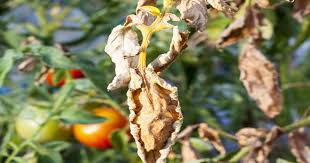
Colony Description:
Colonies are usually fast growing, pale or bright-coloured (depending on the species) with or without a cottony aerial mycelium. The colour of the thallus varies from whitish to yellow, pink, red or purple shades. Species of Fusarium typically produce both macro- and microconidia from slender phialides.
Spore (Conidia) Description:
Most characteristic are the colourless spores (conidia), which are canoe-shaped in side view, have a distinct "foot cell" at the lower end, and are divided by several cross-walls. The conidiophores are often clustered to form sporodochia and produce large pasty masses of spores from tapered phialides.
Habitat outdoors:
Species are ubiquitous and may be found in the soil, air, on plants and water sources.
Habitat Indoors:
In indoor environments Fusarium species are generally found under very wet conditions. They are commonly isolated from carpet and mattress dust, damp walls, wallpaper, polyester polyurethane foam, humidifier pans and areas where stagnant water occurs in HVAC systems.

Potential Health Effects:
Allergenic:
Common
Type I allergies (hay fever, asthma).
Dermatitis
Sinusitis
Toxigenic:
Toxins are chemical components which are capable of causing diseases and death.
Zearalenone (ZEA) is a mycotoxin that is produced by the mold species Fusarium, and has been shown to be hepatotoxic, haematotoxic, immunotoxic, and genotoxic.
Fumonisins: are naturally occurring toxins produced by several species of Fusarium fungi (moulds). A number of different types of fumonisin are known, but fumonisins B1, B2 and B3 (also named FB1, FB2 and FB3) are the major forms found in food. Fumonisins can have significant health effects in livestock and other animals. While the evidence for adverse health effects in humans is currently inconclusive, there are concerns that exposure to fumonisins may contribute to various serious adverse health outcomes such as general malaise, cancer and birth defects.
Trichothecenes: The trichothecene mycotoxins are a group of toxins produced by fusarium and multiple genera of fungi. Symptoms may occur among exposed humans or animals. The likelihood of developing adverse effects following exposure depends on such variables as: toxin type and purity, dose, and duration of exposure. Dermal exposure in some situations could lead to burning pain, redness, and blisters, and oral exposure may lead to vomiting and diarrhea. Ocular exposure might result in blurred vision, and inhalational exposure might cause nasal irritation and cough. Systemic symptoms can develop with all routes of exposure (especially inhalation) and might include weakness, malaise, ataxia, hypotension, coagulopathy, and death.
Effects of fusarium on plants
The fungal pathogen Fusarium oxysporum affects a wide variety of hosts of any age. Tomato, tobacco, legumes, cucurbits, sweet potatoes and banana are a few of the most susceptible plants, but it also infects other herbaceous plants. Fusarium oxysporum generally produces symptoms such as wilting, chlorosis, necrosis, premature leaf drop, browning of the vascular system, stunting and damping-off. The most important of these is vascular wilt. Fusarium wilt starts out looking like vein clearing on the younger leaves and drooping of the older lower leaves, followed by stunting, yellowing of the lower leaves, defoliation, marginal necrosis and plant death. On older plants, symptoms are more distinct between the blossoming and fruit maturation stages.
Due to the plant variation affected by the fusarium fungal pathogen. Fusarium can be transported easily by means of infected plants near the home. This usually occurs through air currents flowing through the affected plants, where strong air currents pick up fusarium mould structures and flow through the air current pathways which are in direct path of your open homes via open doors, windows, open rafter’s etc. Also directly, from person to homes via affected plants or fruits and vegetables which are transportation for human consumption.
REFERENCES
Ph.D. K. Seifert, Ph.D. G.Morgan- Jones. Ph. D. W.Gams. Ph.D. B.Kendrick -The Genera of Hyphomycetes.
2019 by the authors. Licensee MDPI, Basel, Switzerland. This article is an open access article distributed under the terms and conditions of the Creative Commons Attribution (CC BY) license (http://creativecommons.org/licenses/by/4.0/).
Ploetz, R.C. Fusarium wilt of banana. Phytopathology 2015, 105, 1512–1521. [Google Scholar] [CrossRef] [PubMed] Nganje, W.E.; Bangsund, D.A.; Leistritz, F.L.; Wilson, W.W.; Tiapo, N.M. Regional economic impacts of Fusarium head blight in wheat and barley. Rev. Agric. Econ. 2004, 26, 332–347. [Google Scholar] [CrossRef] Jones, J.P.; Jones, J.B.; Miller, W. Fusarium wilt on tomato. Fla Dept Agric & Consumer Serv, Div of Plant Industry; Plant Pathology circular no. 237; 1982. Available online: https://www.fdacs.gov/content/download/11243/file/pp237.pdf (accessed on 14 November 2019).






Comments